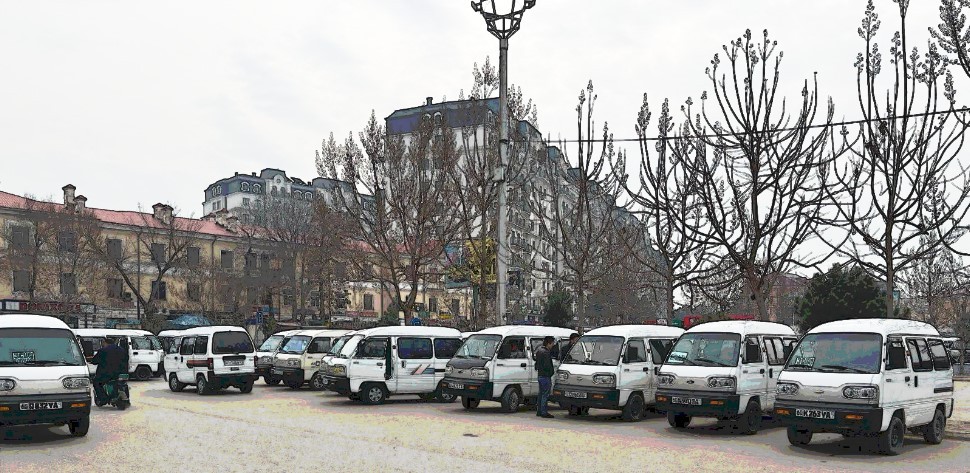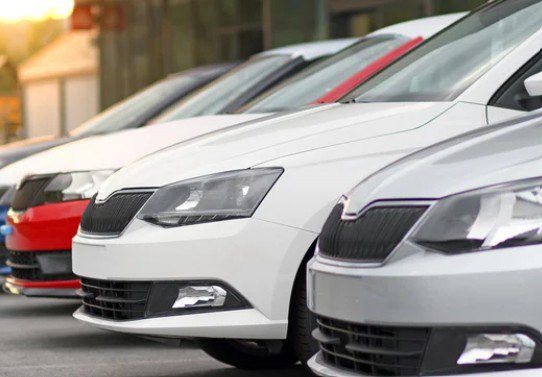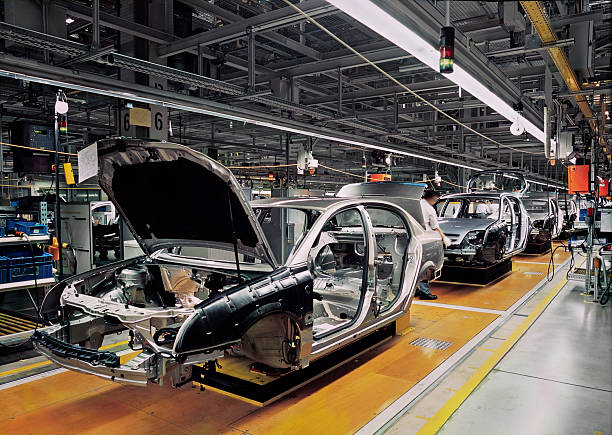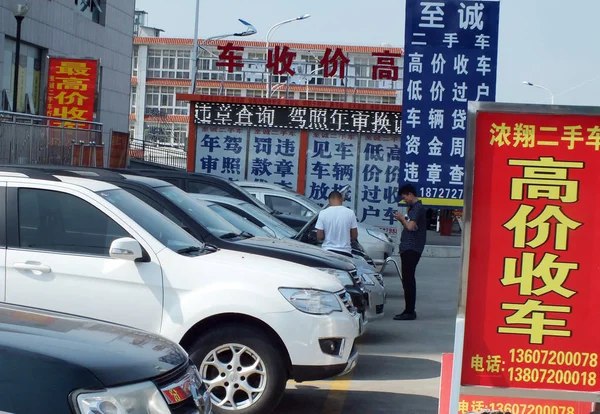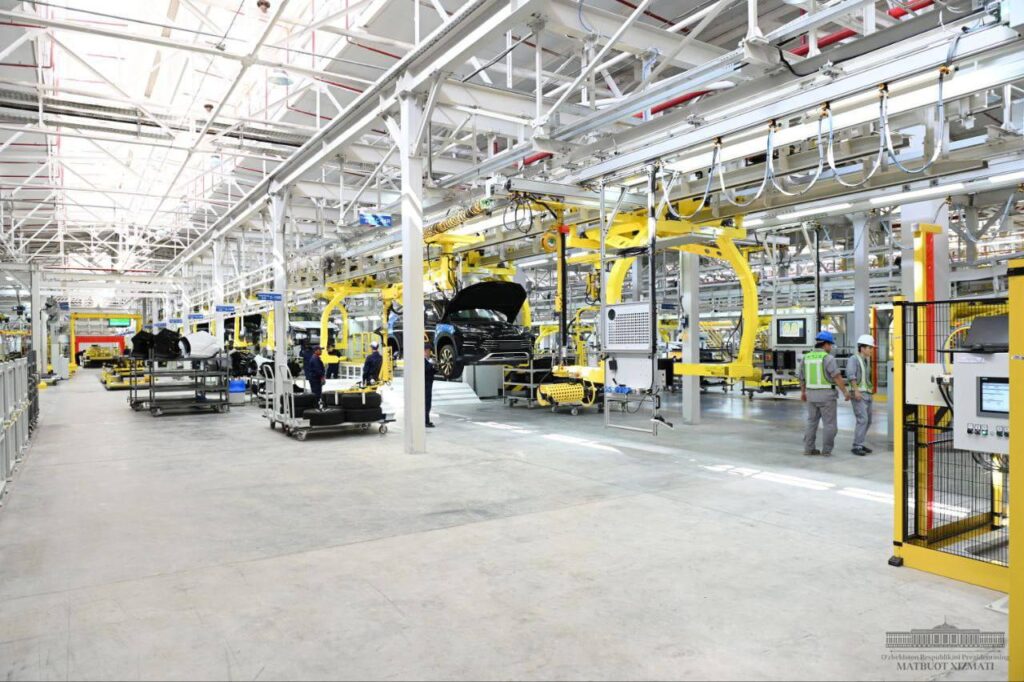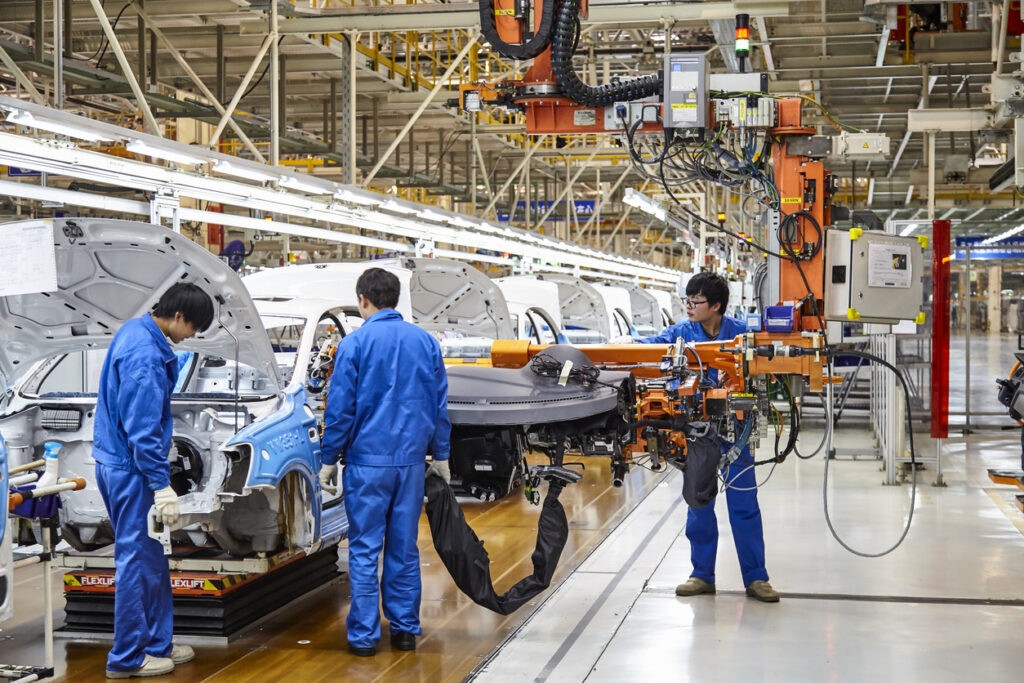ANDIJAN — Spend long enough in Uzbekistan and you become adept at reading numberplates. While in Paris or Los Angeles, you will generally identify your taxi by its color and its manufacturer; try doing that in Uzbekistan, and you run into a problem: for the past two decades or so, the color and manufacturer have invariably been White and Chevrolet.
“Yep, it’s true,” laughed Alisher, as I remarked on this when he collected me from Andijan train station. “90% of the cars are Chevrolets, and 80% of them are white.”
But this era of monochrome monopoly may be coming to an end. With the electric vehicle (EV) revolution sweeping the world, Chinese companies have Chevrolet’s kingdom in their sights.
A Levy for the Chevy
Islam Karimov, Uzbekistan’s first president, was alone among the leaders of former Soviet republics in being a trained economist. Schooled in the planned economy, his powerful state acquired control over key industries and sought to make Uzbekistan self-reliant.
It did a deal with South Korean conglomerate Daewoo to open its first factory in Uzbekistan in 1996, while slapping huge tariffs on all cars coming into the country from abroad.
Daewoo, caught up in the Asian Financial Crisis in 1998, sold its auto arm to General Motors in 2002. The Detroit giant saw little wrong with the deal they had inherited in Uzbekistan, and so continued to produce Daewoo cars but now under their Chevrolet branding. The partnership transformed streets all across the country, with practically the only other cars to be seen on the roads being old Ladas from the Soviet period.
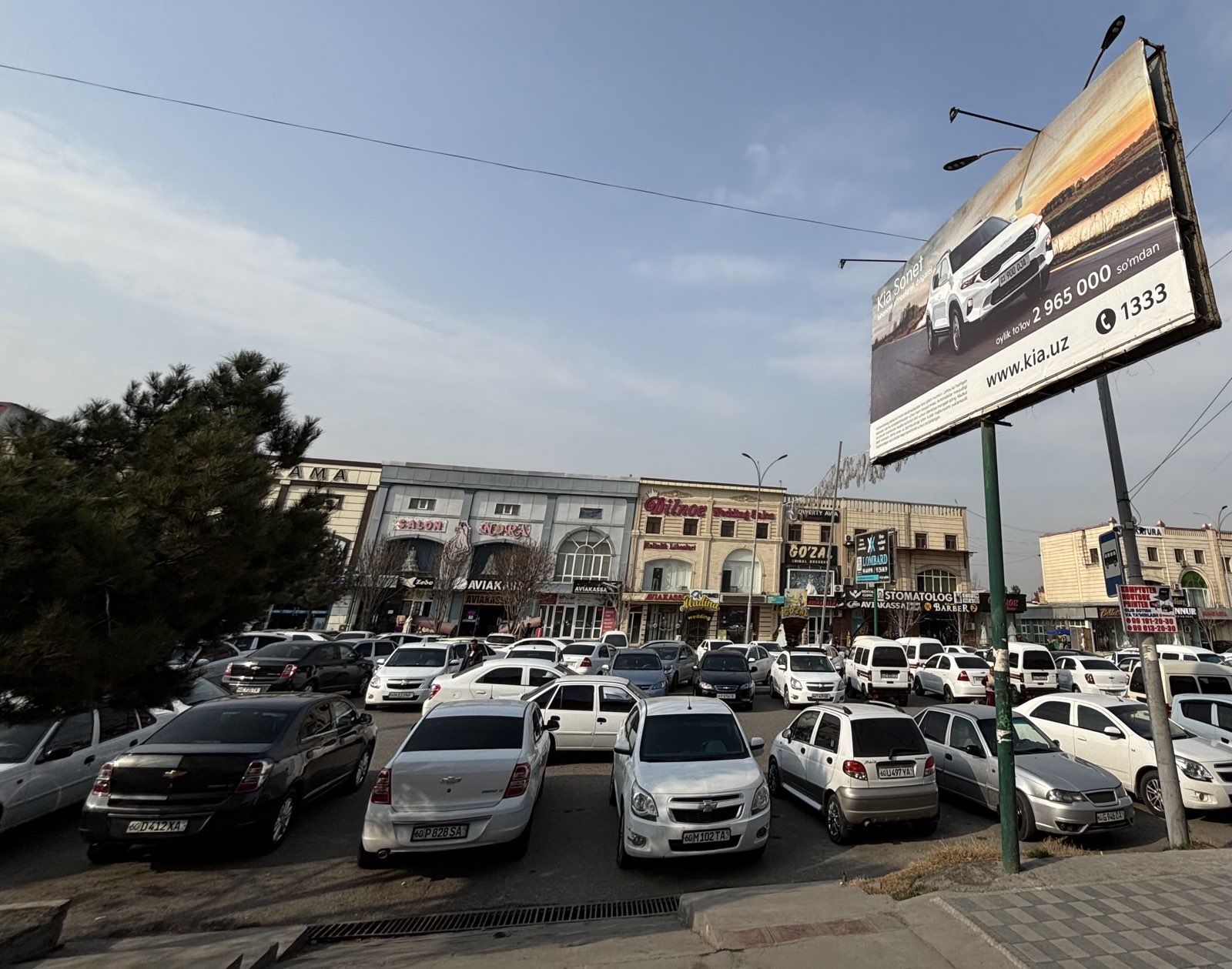
A Kia hoarding above, naught but Chevrolet’s below; image: Joe Luc Barnes
This lack of choice nevertheless provided jobs and an industrial base for the country’s auto industry.
“I am very proud that Uzbekistan has built such an industry,” said Aziz Shukurov, CEO of A Group, a chain of car dealerships and owner of the nation’s largest network of service stations. “Today, more than one hundred companies operate in the local automotive industry producing parts for the vehicles; a lot of technology has been transferred over the years with tens of thousands of people employed. To my mind, a strong local automotive industry is a substantial asset for any country.”
Meeting Mr. Market
After Karimov died in 2016, his successor, Shavkat Mirziyoyev, began to embrace the free market. Close to a decade later, Tashkent throughfares are home to ever more foreign brands. Most prominent are South Korea’s Kia and Hyundai and China’s BYD and Changan.
“The new president started opening up the country from 2017, giving access to foreign institutions and companies to the Uzbekistan market,” said Farkhodjon Israilov, an expert who specializes in attracting foreign investment into the country.
In 2019, the government removed import duties and excise taxes on EVs. Given the growing popularity of EVs since then, the state-owned UzAuto Motors partnered with BYD to open one of only two operational production facilities outside China – the other is in Rayong, Thailand, with more planned in Brazil, Hungary, Indonesia, and Turkey – in Mirziyoyev’s home city of Jizzakh. The plant, 60% owned by UzAuto and 40% by BYD, is expected to produce around 50,000 cars annually.
Recent stats detailing 2024 car sales show these changes are beginning to take effect. Of the 482,000 vehicles sold in 2024, 353,730 were Chevrolet. There were around another 50,000 domestically produced cars, mainly under the Kia and BYD brands, as well as another 80,000 imported cars.
Israilov finds the new availability of choice exhilarating. “You can even find Porsche here now!” he said. “But there are also Chinese cars whose brands I haven’t even heard of… so there is always choice.”

BYD has taken increasing market share in the country; image: Joe Luc Barnes
A Well-Defended Bastion
Outside the capital it’s a different story: in Andijan, around ten kilometers from the Chevrolet factory in Asaka, a quick survey on Bobur Prospekt revealed that nine cars out of a total of 200 were not Chevrolet. In other words, 4.5%.
“Electric cars are more expensive,” said Alisher. “If I have the money, sure, it’s a great idea. But the service is more expensive; the maintenance too.”
Alisher touches on an underrated aspect of Chevrolet’s dominance: the preponderance of spare parts. If your new Chinese electric car breaks down or needs a new part, there isn’t necessarily the availability or expertise to fix it. With Chevrolet, given every garage in the country has learned to specialize in it, vehicle repairs become a lot easier.
Mechanics are also used to switching out the Chevrolet’s engine. “When you buy the car, it runs on petrol, but installing a propane tank has become very common,” said Alisher. Propane and methane are common fuel sources when it’s so expensive to import refined petrol into the country. “Actually, an electric car might be even cheaper if the up-front costs weren’t so high.”

In Andijan, Chevrolet’s dominance remains near-total; image: Joe Luc Barnes
But these structural moats that protect Chevrolet’s business model may be being bridged.
“There are still tons of customers who still think like them,” said Sherzod Yuldashev when I told him about Alisher’s concerns. Yuldashev is the Director of Business Development at Runking Motor Group, an EV importer. However, he’s confident that people will come around to EVs. “Year by year, the growing sales of electric vehicles in Uzbekistan are evidence that people are changing their minds,” he added.
Israilov agrees that the direction of travel seems inevitable and that the market is quickly adapting to servicing electric vehicles. “Two or three years ago, when you bought any kind of electric vehicle, you might have a problem. Right now, even if you are buying Tesla, there are people who can help you to solve any issue.” He adds that more established brands like BYD even provide their own car servicing.
EVs are predicted to become more affordable, with Shukurov believing that economies of scale and infrastructure development will drive prices down. Israilov agrees, saying that there are already Chinese EVs available for as little as US $15,000.
Then, there are the problems that Chevrolet itself is experiencing. Yuldashev believes that the company is struggling to develop new competitive models. “Their current product portfolio is getting smaller and smaller,” he said, noting that the popular Spark, Lacetti, and Nexia have all been dropped from their product line. Of the remaining models, only the Cobalt sedan remains popular, with a long delayed new version set to go on sale this year.
Has the Leopard Changed Its Spots?
There are a few signs that the government is concerned about the number of imports, imposing several non-tariff barriers last year. This is in response to the fact that BYD models produced in Uzbekistan are more costly than those imported directly from China. One of these barriers includes last November’s introduction of compulsory electromagnetic compatibility checks on imported EVs, a layer of bureaucracy costing nearly 6.3 million UZS (almost $500) per vehicle.
Nevertheless, given the speed of change and the fact that Uzbekistan’s domestic EV production is still relatively low, Shukurov doesn’t seem to feel that there is much that can be done to counter Chinese influence. “The scale and the pace of Chinese EV industrialization made it inevitable for Chinese EV products to come to many regions and compete with local products,” he said.
In the meantime, however, many customers are simply reveling in the newfound choice, something which even Chevrolet has begun to embrace, having been forced to lower its prices to entice customers. “We never had any discounts from Chevrolet in Uzbekistan before; it forces our domestic producers to also become competitive,” said Israilov. “This is the market economy at work.”
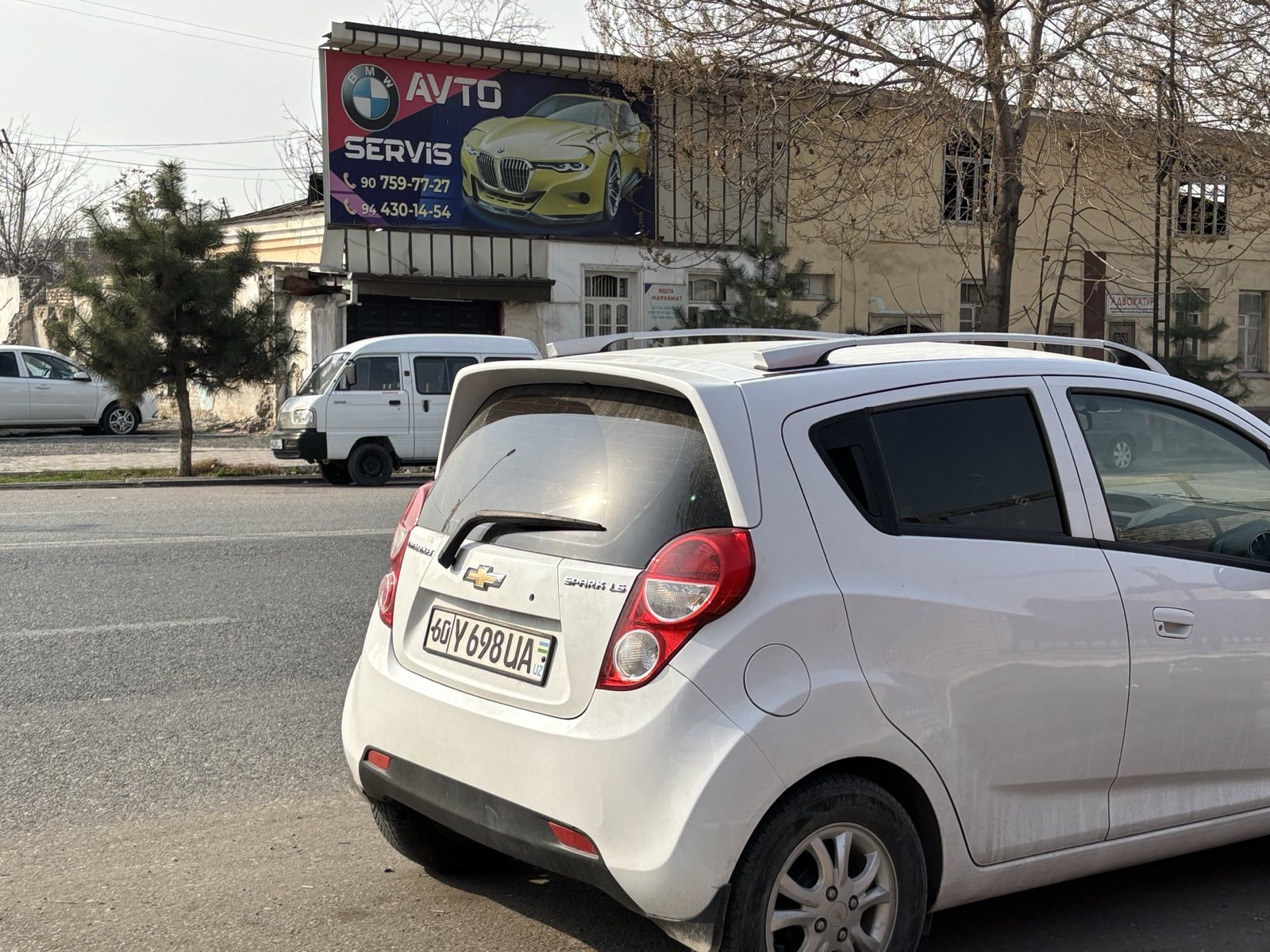
You can’t start a fire without a Spark; image: Joe Luc Barnes
